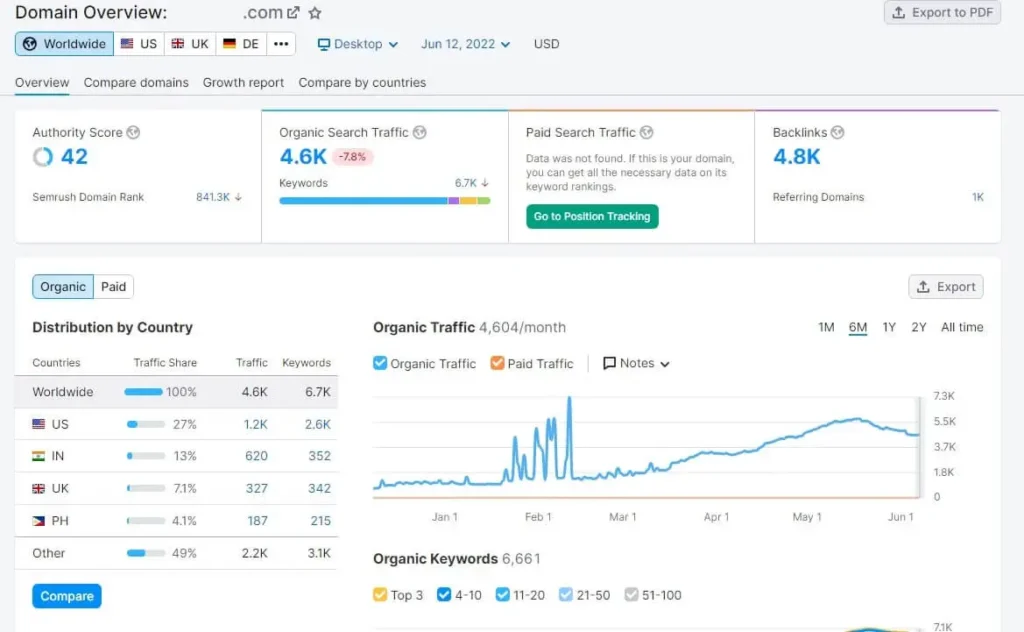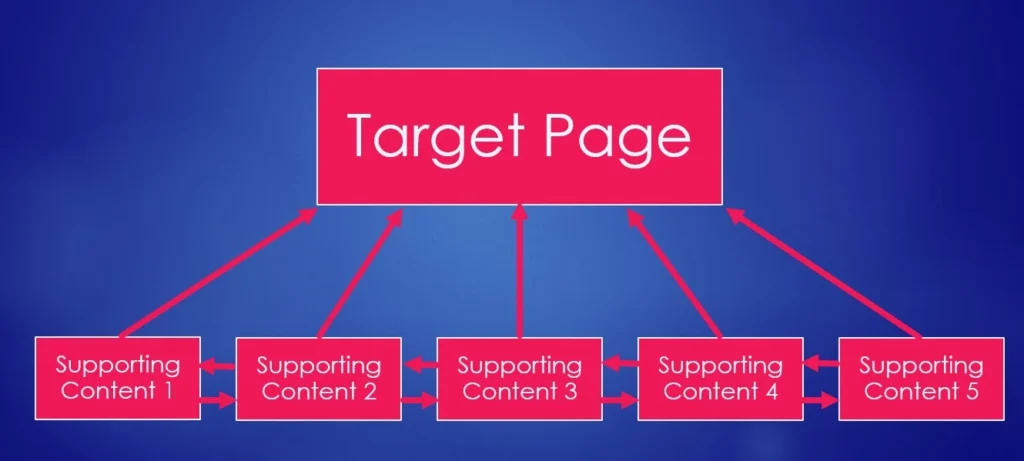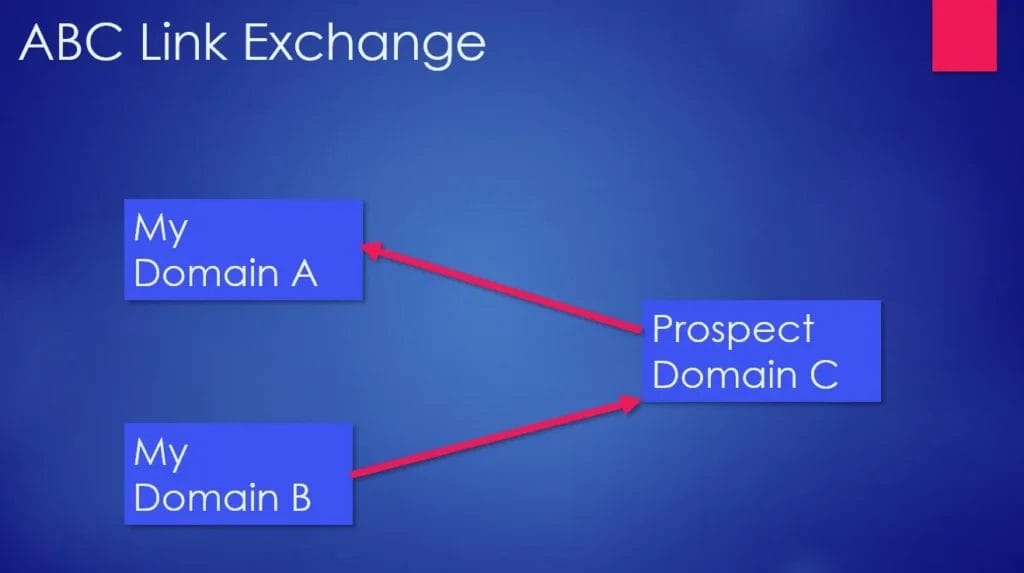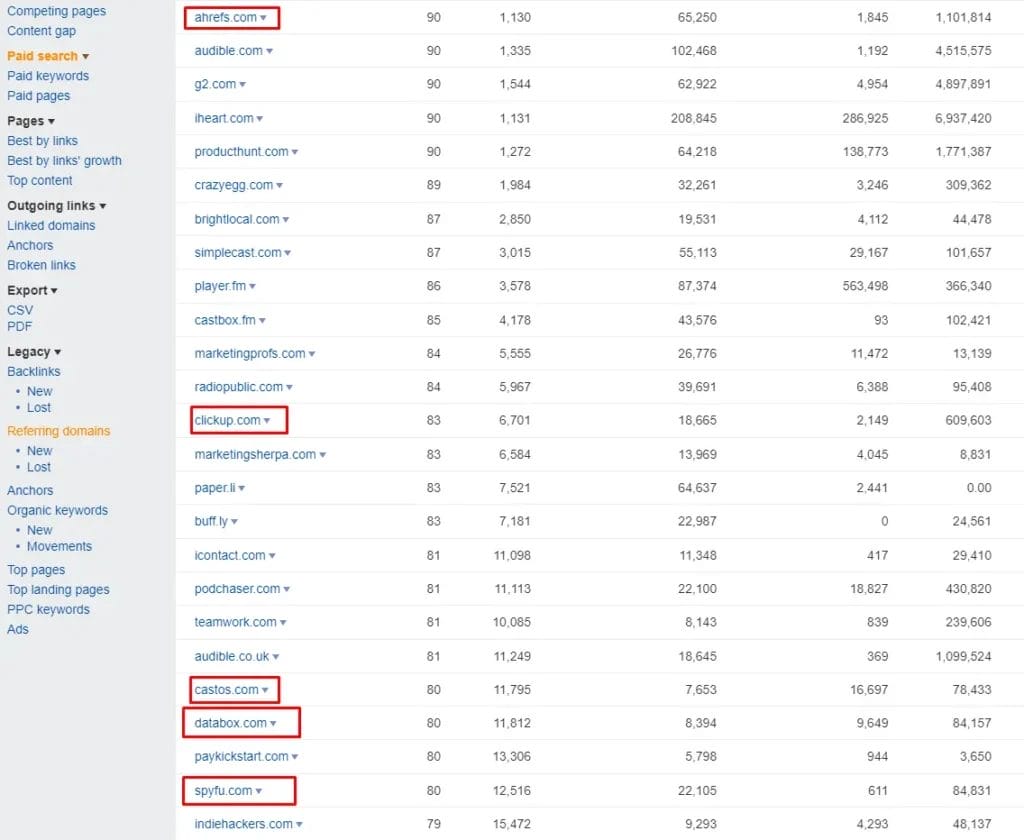Some people consider the art of SEO as the voodoo black magic of the marketing industry as it is filled with technical jargon and SEO practices can vary quite a lot depending on the level expert. Might also be the reason why SEO is viewed as snake oil.
So it’s obvious for business owners to have trust issues and oh boiii don’t I like to take advantage of it. Basically I find it satisfying to be as transparent as possible. You might like it, might even hate it. Me and my team like to serve raw, unfiltered truth with ZERO sugarcoats. Hey I’m Antoz, and I hack google for a living… JK! I’m just another marketing geek with a serious obsession for SEO.
Alrighty then! Let’s walk you through exactly how I took a site from 0 visits per month to 55,200 per year. This case study provides a behind-the-scenes look into what an SEO campaign looks like working with me.

We began with the content production in the last week of October. Focus was entirely on growing their organic visitors from November 2021 to March 2022.
This is one of those SEO success stories where you learn tons of tactics. I’m not a master of dark mystique arts but I am an aggressively honest SEO Guy with cringe AF humor. Do reach the finishing line of the article; that’s where we flash our top-secret tools. It’ll also help reduce the bounce rate of this article.

Let’s dive into it.
Background On The Client
After I took on this project realized they never hired any SEO help before. No proper work had been done before I came to the scene. They’ve been doing it all on their own. One might even call it SEO virgin 😉.
The client owns a SaaS tool with big-league competitors like Lemlist, Woodpecker, Mailshake. And their target keywords were competing with Ahrefs and Hubspot.
Work began on September 2021. This was their status:
- DA 28
- Super Competitive Niche
- Poor performing content
- 31 Published Articles
- 136 Referring Domains
- Poor UI issues
- Failed Core Web Vitals
The articles were not at all SEO optimized, keyword focused or even serving the search intent properly. They were publishing articles willy-nilly based on what the tool could do. However, they did build a bunch of backlinks, and yes, this is something they did right. The founder did it all by himself. While some of the backlinks were powerful, the anchor texts were not up to the mark from an SEO perspective.
The Baby Steps
The first things first! Know what you’re getting yourself into. The founder helped me get up to speed on how to use their tool. I needed to know the tool inside out like the back of my hand, or else I won’t be able to figure out what makes them different. The goal was to help them find their voice.
The competition was fierce, so I needed to find their Unique Selling Point and Unique Value Propositions to make them stand out. I have used most of the competitor’s tools myself already. But I still needed more information; I posed as a potential customer and asked the competitors about what makes them unique. This helped me figure out the client’s UVP & USP and inform the development team about what they’re missing out on.
Then it was time to do an SEO AUDIT! to figure out everything wrong. The page-level audit aimed to figure out the site’s technical issues, link issues, and previously published content.
TL;DR
- Understanding the tool
- Understanding their Competitors
- Figure out their UVP & USP
- Page-Level Audit
Building The Content Strategy
Your content strategy might begin with proper keyword research. Here’s the thing. I don’t always do keyword research in the beginning. Instead, I take a different approach.
TL;DR
- Choose the topic
- Find actual competitors
- Use Ahrefs batch analysis to find their Domain Rating & Organic traffic.
- Pull in their Moz DA
- Pick the site with the lowest DA/DR with the highest traffic
- Find more domains like these
- Find the articles based on your Topic – Ahref Top Page & Best by links
- Include keyword clusters & LSI keywords on the final sheet
- Look for supporting materials using their keywords from Quora & PAA
- Utilize topical authority strategy & organize the keywords semantically
Content creation is easy AF!
– No writer ever.
The goal was to publish 10 pillar contents. The pillar articles would be fully action-packed with value that users actually want to read. Keyword difficulty was not a priority when creating pillar articles. The priority was to rank for longer-tail keywords as fast as possible.
Then, use those supporting content to build internal links and push the 10 pillar contents up the SERP. And also diversify the type of content of the supporting articles. These steps are mandatory if you want to increase your visitors per month.
We needed to find the competitors best-performing articles that we might also be able to rank for. All we needed to do was create a better one with no fluff or filler content.
- Content that actually solves the readers’ problem
- Satisfies the Search Intent
- While being fully SEO optimized
See? Easy peasy!
Choosing The Right Topic
The client wanted to rank for keywords in multiple industries
- SEO
- Digital PR
- Podcasting
- Sales
- Cold Email Outreach
If you want to rank for SEO terms, you will be going against sites like Ahrefs and Backlinko. Truth be told, I had a tiny stroke thinking whether I could rank for SEO topic keywords where the competitors are all big league players with 70+ Domain Authority. Going to war against high authority sites that dominate the SERP is every SEO guys nightmare.
So the solution was to look for a topic where I could have some quick and easy wins. After vigorously analyzing the competitors in the market for each topic, I concluded that we should target the “Outreach” topic.
The Competitor Mining Strategy
Fun fact! Did you know that having competitors is actually a good thing? Why? Because they have already put in the work to find out what works and what not. Not everyone is your competitor. SEO guys can reverse engineer their keyword strategy and help you gain traffic this way.
Now the goal was to find all the true competitors. Meaning… find all the SaaS tools that do similar to this one. We scraped the SERP based on these keywords that were their use cases and then filtered the domains based on relevancy.
- Best (use_case1) tools, software
- Best (use_case2) tools, software
- Best (use_case3) tools, software
- [Competitor Name] alternative tools
- Checked G2, Capterra, Crunchbase
This gave us a bunch of actual competitors to get started with our work.
Finding Your Target Keywords
The primary goal was to find low-hanging fruit keywords and content gap analysis. Since they didn’t have much content to work with, we didn’t face difficulties finding ripe keywords.
So how do you find these keywords? Insert the best ripe domains in Ahrefs, check their Top Pages & Best by links now find the articles based on your topic. Articles that are getting links and traffic are the ones you should be targeting. Those pages always have a good amount of search volume.
Once, we had a bunch of good articles links to work with. Next, we needed to find the focus keywords of all those articles. You can find the primary keywords with Ahrefs Top page; check manually or by using the seoquake extension.
Building Keyword Clusters
If your SEO strategy doesn’t have a proper keyword clustering mechanism, there’s something wrong with it.
Blog posts I picked from the competitors needed to be verified whether I could rank for that or not. Keyword verification is an in-depth process of identifying keywords with the maximum potential to rank based on SERP & multiple other factors.
Now that I have the target keywords to work with, I would hit up ahrefs keyword explorer to work with the top 10 results. Then scrape the top 10 results keywords and create a list of all the scraped keywords in one CSV. Finally, upload the keywords data sheet into keyword clustering tools
- Writerzen
- Keywordcupid
- KeywordInsights
and VOILA! You have just built your semantically clustered keywords for that specific focus keyword based on the top 10 results.
I also used LSI Graph to collect a bunch of LSI Keywords for my focus keyword.
Finding Keywords For Supporting Content
There are multiple ways you can find keywords for supporting content. From google search console, from competitors’ content subsections, google autocomplete, alphabet soup method, etc. I utilized Quora to find more keywords and Topic Mojo for more topics to cover.

Inserted quora in Ahrefs, went to their top pages, and filtered the results based on the desired keyword I was targeting. Then verified the keywords to check the ranking possibility. Also, check whether the competitors are covering this topic or not.
Implement Topical Authority Tactic
Alright, we are almost ready for content production now that we have a bunch of focus keywords for a bunch of pillars, long-tail keywords, and enough materials for the supporting contents. We are ready to roll! We have gathered and verified all possible keywords on Potato Recipes.
But wait! hold your horses; once we produce the contents, those would need to be published in one topic at a time we typically call these “content batches”.
Articles are published on one topic at a time based on the highest possible rankability which is determined by the domains authority, keywords difficulty, volume and then there’s also the content types such as pillar or supporting articles and so on.
For example:
Article 1: Ultimate List of Best Potato Recipes
Article 2: How To Make The Best Potato Wedges
Article 3: How To Make Crispy Garlic Potato Wedges in Oven
Article 1 is clearly a pillar article. So the job of article 2 and article 3 is to link back to article 1.
Articles 1, 2, and 3 would also be published sequentially. All the contents ever to be published should always be published in batches of related topic. Cover all the topic to master Semantic SEO, that’s pretty much it.
All these articles are about Potato Recipes. You don’t want to publish a strawberry milkshake article before publishing all the articles on potato recipes.
Creating Content That Ranks
Creating content is easy but creating content that will actually rank in the top 10 is where the true challenge lies. So here’s how to ensure that your content quality is always top-notch.
- Find a unique content angle
- Find UVP for the article
- Craft TOC based on top 20 results
- Optimize using Surfer
- Sprinkle in the Clustered Keywords
- Insert the LSIs
- Snippet Optimization
- Polish it – Edit, Proofread, tweak
- Promote the In house SaaS tools based on their USP
- Basic On-page practices
Prepping For The Best Article
I was determined to find a Unique Content Angle for every single post.
But how do you actually do that?
- Set 100 results per page on google
- Install an infinite scroll chrome extension
- Analyze SERP using the focus keyword
So how do you analyze the SERP? When you glance over the top 200-300 article titles, you’ll immediately realize what’s missing if you know the topic really well. Don’t panic; it doesn’t take much time to analyze 200-300 Titles; you just need to skim through them.
This will help you find your unique voice. For example, if everyone is talking about 20 Spam trigger Words, you should come up with 30 spam trigger words. Unfortunately, increasing the amount is also not always the solution; it varies for every single keyword there’s no pattern.
Analyzing the top 20 article subsections can also help you find your UVP. It helps you better understand what information they are currently missing out on. The tricky part is to make it all come together. Your UVP should fit in based on your unique content angle. That’s pretty much the secret sauce of quality content.
Creating Awesome Content Briefs
We use Frase to create the content briefs. It easily scrapes the top 20 article headers tags based on the focus keyword you insert. What’s currently working is a content brief based on the top 20 article headers coupled with its own UVP subsections.
The Content Brief also lets the writer know from where to pick their references for each and every subsection.
- Word Count
- Goal of the Article
- Target Audience
- Writers perspective
- Article Tone
- Creativity
- Keywords to include
- Keyword to avoid – due to cannibalization possibility
- Meta description
- FAQs
90% of the live articles on their site were produced by following my content briefs. After the content briefs were done, the founder assigned articles to writers based on topical priority. We scraped google PAA using topic mojo and included those FAQs in most of our articles.
Conquering The SERP with Snippets
I made the additional adjustments after the writers returned with the finished articles.
Such as ensuring quality, inserting statistics, authenticating data, inserting keywords the writer might have missed, and doing the Snippet Optimization.
So how did I win so many snippets? We always made sure the user intent was covered from our end.
- Convert the focus keyword into a question
- Find whatever is in the snippet
- Is it a List? Or a paragraph?
- Replicate their List /Definition/Answer
- Insert Modifiers (Step# 1: )
- Write all the subsections in imperative sentences

If my focus keyword is blogger outreach. The first thing I’d do is look for snippet possibilities. How are others ranking for this keyword?
Every piece of content that was previously published was also SEO optimized. Remember when I was scared to wage war against big league SEO blogs? We defeated backlinko, Ahrefs & Neil Patel blog with tons of keywords. One of my articles even landed a backlink from Ahrefs as well thanks to Fraser McCulloch.
Tackling the On-Page SEO
Matt Diggity calls it three kings.
Keep your Main focus keyword in
- URL
- SEO Title Tag
- Page Title H1
Then there is also the subheading and the content paragraphs to include the keywords in. So if you think mentioning your keyword 6 times inside the content will work, nope. I wish it did, though.
Internal Linking Strategy
If you don’t have an internal links strategy, you must follow this one now.
For every article we published, I created a tracking sheet. First, we used the good old site:domain.com/best-potato-recipe to find potato-related articles. Then, internally link those like an intricate web with long anchor texts and update the sheet.

Once we finished the basics, we’d enrich the articles with statistics; the more, the merrier. If you’re writing for health blogs, you can also find more information from google scholar to insert scientifically proven data. Be sure to link out to relevant authoritative sites with 40+ DA.
Content Marketing Strategy
They already had a VA in place managing the link-building campaigns.
From prospecting, personalization, email collection, and email address verification to removing previous campaign emails, pretty much everything was done using a versatile tool called Postaga.
Content marketing is more than just ranking and promoting your articles via link-building campaigns. And if you’re working with a SaaS tool, there are more opportunities. Here’s a list of ideas we implemented.
- Build a template hub
- Craft competitors VS or alternative pages
- Build a success calculator
- Self-invite to Podcast shows
- Build a Chrome website extension
- Invite industry experts to our channel
- Collaborate with other SaaS tools
- Webinars with giveaways
A few didn’t get approved, but most did. And it did bring the client some serious authority in the SaaS community and customers.
Link Building Strategy To Promote Your Content
We had no luck trying out the skyscraper technique. There might be SEOs in the industry who had luck making it work. Sadly I couldn’t; 1000 to 5 is something I don’t consider a successful campaign.
It’d be a lie if we said no one wanted money from us for backlinks. But it’d also be hard for you to believe if we say never paid a single dime for all the backlinks we gained. Yep, it was all FREE! Here’s what we did.
I realized the company had another functional domain. So we started doing ABC link exchange.

We started running niche edits campaigns instead of going through the hassle of producing guest post articles for the publishers.
A combination of ABC link exchange and editorial link building gained us 10-15 backlinks per month.
We also had some luck running guest posting campaigns where we supplied them with fresh content.
Our link-building campaigns were quite different from anyone you’ve probably seen out there.
Here are the elements it had.
- Humorous email copy
- Fully personalized
- The initial email copy contained topics
- 2nd follow-up email had personalized images
- 3rd follow-up email had personalized gifs
Sometimes it also had a cat with the founder in it. Yes! a CAT! and that campaign had some serious responses. So here’s the takeaway, visual personalization works wonders when coupled with a good email copy.
Believe it!

Here are a few links we won from my articles. We won some fantastic links cause I personally knew the content marketing manager of the blog or the founder knew them. So high-quality content was crucial in getting those links, not just connections, and good email outreach copy.
- Ahrefs
- Clickup.com
- Databox.com
- Spyfu.com
- Castos.com
- Geekflare

Podcast Interviews
We were using a tool called Postaga for our link-building efforts. Here’s a fun fact, postaga also has the ability to prospect for podcast opportunities. I think their search engine works somewhat similar to sparktoro. So we ran multiple campaigns to invite the founder to a bunch of podcast shows.
I even called in favors to use my personal connections to invite the industry experts for an interview.
Fixing The Technical Issues
After the audit was completed, we had to implement the fixes. But it was constantly getting pushed back due to other important tasks the client wanted us to focus on. If you think fixing the technical issues doesn’t have anything to do with your organic traffic growth, newsflash, it does.
- Bad UX
- Core Web Vital Issues
- Bad Spammy Backlinks
- Broken Links
- HTTPS to HTTP pages
The website was super slow, so the founder called in outside help to fix the site, and oh boy, did they work wonders. The client’s site jumped from 30 to 90 in page speed insights metrics. And no! the speed optimization guys did not use Nitropack 🤮. This upgraded the user experience for mobile users as well.
We took care of the other issues.
The Challenges We Faced
- Finding the Writers
- Maintaining constant publications
- Content Budget
- Having less control
Finding the Right Writers
SERP Cat did not handle the content. We supplied them with highly researched content brief. Finding and getting the content written was handled by the client. We all know how difficult it can be to find writers. He was looking for writers on Upwork. He went through hundreds of article samples and gave us his final ones. I had to choose the writers from 5 articles. Once we hired them full-time, their article quality degraded. They decided to plagiarize the content and expand the topic in the content brief.
Difficulty Maintaining Constant Publications
The writers we decided to work with were giving us plagiarized content. Thanks to tools like Quetext & Copyscape for capturing the plagiarized sentences. Then during the holiday season in December, the writers vanished. Poof! Abra Kadabra gone.
This is entirely understandable, but they were supposed to provide us with enough articles so that we could keep those scheduled during the month. But unfortunately, even after the holiday season, they did not return.
So the founder started looking for writers again. I was panicking, and the founder was becoming annoyed, weeding through hundreds of writers. Then he decided to ask his friends to recommend us writers. And we got hooked up with 2 decent ones.
Content Planning
I suggested that we should produce 30 articles per month. But we could hardly keep up publishing 4 articles each week. But we were struggling with finding the right writers. The first article was published on 17th October based on the Content Briefs I created. We suffered a few hiccups in the beginning, then everything was okay! Finally, we were able to put out 4 articles per week.
Having Less Control
As an outsider, you can never expect complete control over the content and the link-building campaigns. For example, the founder wanted to change the topic we were working on, move to another one, and publish those articles.
Let’s say we were producing content about potatoes. Best Potato stews, how potatoes are grown in your backyard. Then the founder decided we should start creating content for skateboards and scooters. Yep, moving forward and publishing content of topics from another world without completing the content batch of potatoes.
To Wrap It All Up
Whenever an article was published, we immediately started a campaign to get that article some links. We built some fantastic links. The founder was getting anxious about why keywords weren’t picking up; I also started to panic our organic search traffic wasn’t gaining traction. It was a matter of reputation for me; I gave the man my word that I would ensure growth, and I did everything by the book.
After the 1st December 2021 update, our contents started to pick up. Then I told myself to keep calm SEO process takes time.
By the time I left, the company had 200+ content briefs from me. In addition, they had gained significant authority due to the webinars, podcasts, interviews, and the collaborations with other SaaS that I made happen. Due to the powerful links, their Domain Authority increased to 33 from 28. In addition, their support email was getting filled with emails from new potential customers, which might be due to the organic traffic bump.

List of Tools I Used
We rely on a lot of of tools. These were the mandatory tools i needed. Without these i might not have survived.

- Ahrefs, Ubersuggest & Semrush
- Frase & Surfer SEO
- Keyword Cupid, Writerzen
- Quetext, Copyscape
- Topic Mojo
- Postaga
- Nexweave
- Texau
- Hexomatic
- Hexowatch
Thank you, ladies & gentlemen, for reading this boring case study. Here’s a pic of a happy potato to brighten your day.




